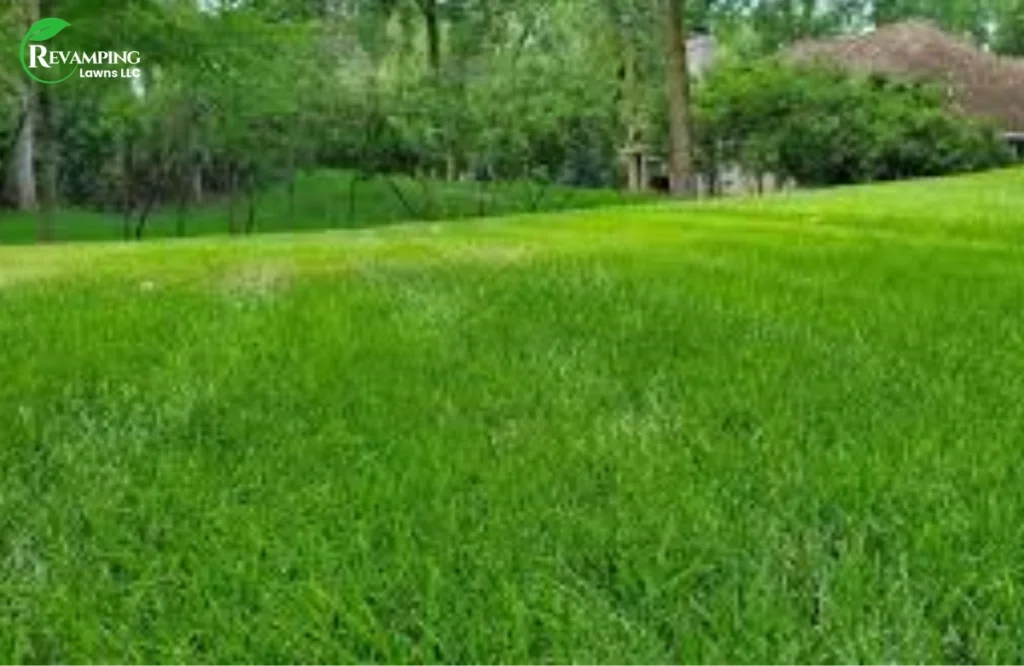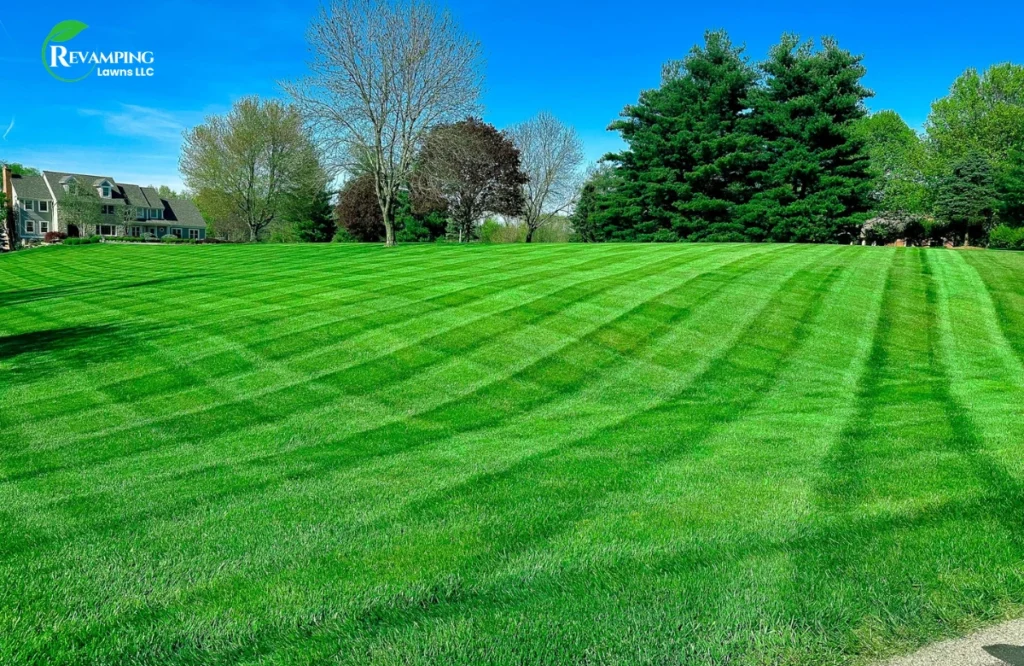The winter preparation of your lawn is a crucial activity in keeping your lawn healthy throughout the years. When temperatures drop and the length of daylight decreases, your lawn automatically starts to grow more slowly and goes into dormancy. Winter preparation is the way to keep your lawn safe in this season against cold damage, disease, and loss of nutrients. This guide will take you through the major processes of preparing your lawn for winter and maintaining it in its best condition throughout the colder months.
The Role of Dormancy in Lawn Health
Dormancy, which is a natural and necessary survival process, is a way through which grass can survive extreme weather conditions like winter cold. When the grass is in the dormancy stage, its metabolism is very low and therefore the grass does not require much water and nutrients. This dormancy period is what makes the lawn save on energy and avoid damage that might be occasioned by low temperatures and lack of sunlight.
When the grass looks brown and inactive above the soil, there are still active roots below the soil that store nutrients to help the grass grow vigorously when spring comes. Dormancy also minimises the chances of typical winter lawn issues like snow moulds and fungal infections, and lessens the necessity to mow, and water.
This is a dormant stage that everyone should understand and respect to have a healthy lawn. When well taken care of prior to, during and after dormancy, your grass will be able to grow fast in the spring and be green and tough all year round.

Protecting Your Lawn Before Winter
Winter protection of your lawn is the most important step that aids in keeping your lawn healthy throughout the winter months. Grass is naturally resting during winter which can also expose your lawn to frost, snow and disease. The fall will be the time to take the right steps to ensure your lawn will survive winter stresses and emerge in the spring lush and robust. The following are the key things to do:
Know Your Grass Type and Regional Climate
Knowledge of the type of grass you have, cool-season grass or warm-season grass, and awareness of your local winter climate can help you adjust your practices in lawn care. Fall aeration and fertilisation suit cool-season grasses such as fescue or bluegrass, whereas spring care is better in warm-season grasses such as Bermuda.
| Feature | Cool-Season Grasses | Warm-Season Grasses |
| Best Climate | Cool, moist | Warm, dry |
| Growth Temperature | 65°F to 80°F | 80°F to 95°F |
| Dormancy | Summer | Winter |
| Common Examples | Kentucky Bluegrass, Fescue | Bermuda, Zoysia |
| Maintenance Needs | More frequent watering | More drought tolerant |
| Shade Tolerance | Good | Moderate |
Clear Leaves and Debris
Rake off or blow away the fallen leaves, sticks, and other debris on your lawn before winter comes. When leaves are left to accumulate, they can block the sun and trap moisture, providing the ideal environment to support the growth of mould, fungal infections and the infestation of pests. Frequent clean-up enhances the airflow and keeps the grass healthy even in the cold months.
Final Mowing Before Winter
Mow your lawn one last time before winter arrives. Attach a medium height mower set usually between 2-3 inches. Such height helps to shield the grass roots against frost damage and at the same time, the grass can maintain an amount of chlorophyll to carry out photosynthesis. Never cut the grass too short because it makes the grass weak and leaves the soil exposed to freezing.
Aeration
Poking small holes by use of a core aerator or garden fork through the lawn is known as aerating to loosen the soil that has been compacted. Compressed soil limits the airflow, water absorption and absorption of nutrients, which are important to strong roots. Aeration enhances drainage and stimulates deep root development to make grass withstand winter hardships and blossom in the spring.
Late Fall Fertilisation of Your Lawn.
Use a slow-release potassium-rich fertiliser in the late fall. Potassium also makes the grass cell walls stronger, thereby increasing its resistance to low temperatures, dry winds, and diseases. This stage should not be fertilised with high amounts of nitrogen since nitrogen encourages leaf development, which can be killed by frost.
Overseeding for Strong Spring Growth
When your lawn has areas of thin or bare lawn, overseed in the fall so that you will have a thicker and healthier lawn. Dormant seed will sprout in spring as soil temperatures increase, resulting in fewer weeds and a thicker turf.
Leaf Cleaning and Lawn Management
Keep up with the leaves as far into the fall as you can. Better airflow and reduced potential of fungal problems would come with a clean lawn. If raking is often not possible, using a mulching mower may also be used to finely chop fallen leaves into useful natural mulch.
Watering Before Winter Sets In
Water your lawn thoroughly before it freezes so that the roots are not dry. The well-hydrated grass can endure winter drought and cold stress. Watering must be either done early in the morning or early afternoon so as to have time to dry before the evening.

Winter Lawn Preparation Services and Costs
The prices of winterizing your lawn depend on the services you need, the size of the lawn, and the region. The following will give a rough description of what you might expect:
- Winter lawn preparation (Basic Services):
Includes trimming, mowing and cleanup- it generally costs between 50 and 150 dollars, based on the size of the lawn.
- Aeration:
Typically, it ranges between $40 and $500, depending on the size of the lawn and the price of the contractor.
- Fertilizing:
Fertilisation of falls costs between $40 and $730, with pet-safe or organic usually being the higher.
- Overseeding:
Depending on the degree of overseeding and the seed variety, seeding services may be as low as $90 to almost $3000.
- Sprinkler System Winterization:
Winterization can increase by around $60 to $120, or more, as in the case of lots of watering zones, when there is an irrigation system involved.
The average complete winter prep package will range between $100 $400. Simple mowing and leaf clearing are some activities that can be done by yourself, which helps cut down the expenses.
Conclusion
Winterizing your lawn is the key to a healthy and year-long flourishing yard. It is a good opportunity to prepare your lawn before winter correctly with debris cleaning, mowing, aerating, fertilising, overseeding, and watering, to give your lawn the best opportunity to endure cold weather and flourish in spring. Moreover, for professional assistance that meets the specific needs of your lawn, call Revamping Lawn LLC. We are a professional team providing safe and affordable winter lawn care, ensuring your lawn is attractive at any time of the year.
FAQs
Winter prep prevents frost damage and diseases to the grass, making it grow strong during spring.
This is best in early fall when it is not yet seriously frosty.
Yes, basic work such as removing leaves and end mowing falls within the DIY. The aeration and fertiliser work might require professional assistance.
To make roots stronger in low-nitrogen fertiliser with a potassium content, use a low-nitrogen fertiliser, which does not stimulate the growth of new leaves.
It is suggested to use in lawns with bare or poor patches so that spring has good, thick grass.
Water is highly necessary once or twice before the ground is frozen, to keep the soil wet without overwatering.



